Akiko Hirai embraces transformation in beautifully imperfect ceramics
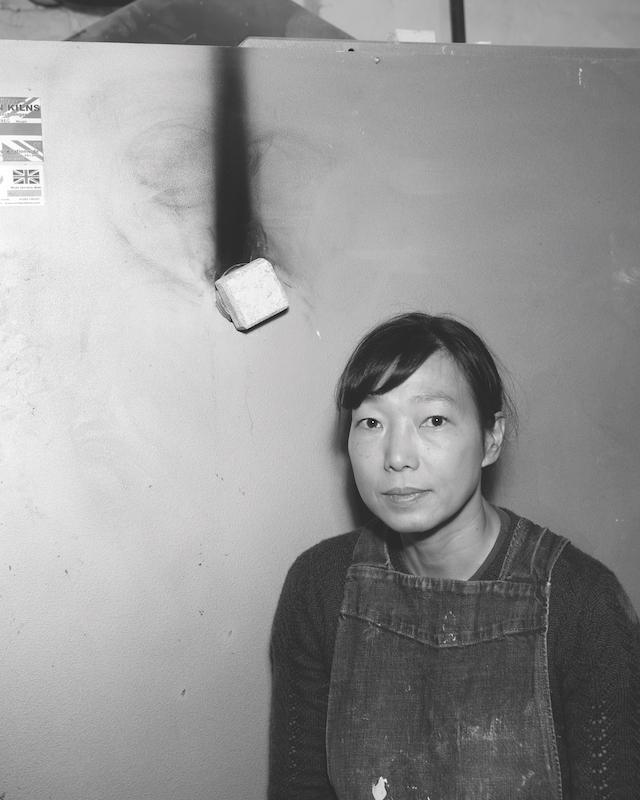
Akiko Hirai’s moon jars appear to have fallen to earth, collecting stellar debris on their spiraling journey downwards. Palimpsest layers of smashed porcelain, dark slip and transparent glaze allow you to witness the extreme stress the material has undergone in the kiln, resulting in beguiling happy accidents – bruised blues fusing with milky enamel-whites and teal-greens. Originally hailing from Shizuoka, Japan, Hirai’s ceramic work also includes plates, cups, sake bottles, teapots, jars, vases and bowls. They are often finished using the Kohiki technique, which uses a more volatile, dark, iron-rich clay body covered in white slip, to embrace natural wabi-sabi imperfections and contrasts. She has lived in London for over twenty years – working out of a studio in the Chocolate Factory N16, an artist collective in Hackney – and was shortlisted for the prestigious international Loewe Craft Prize in 2019.
In conversation with Port, Hirai reflects on practicality shaping aesthetics, the naturalness of impurity, and why pots are like humans.
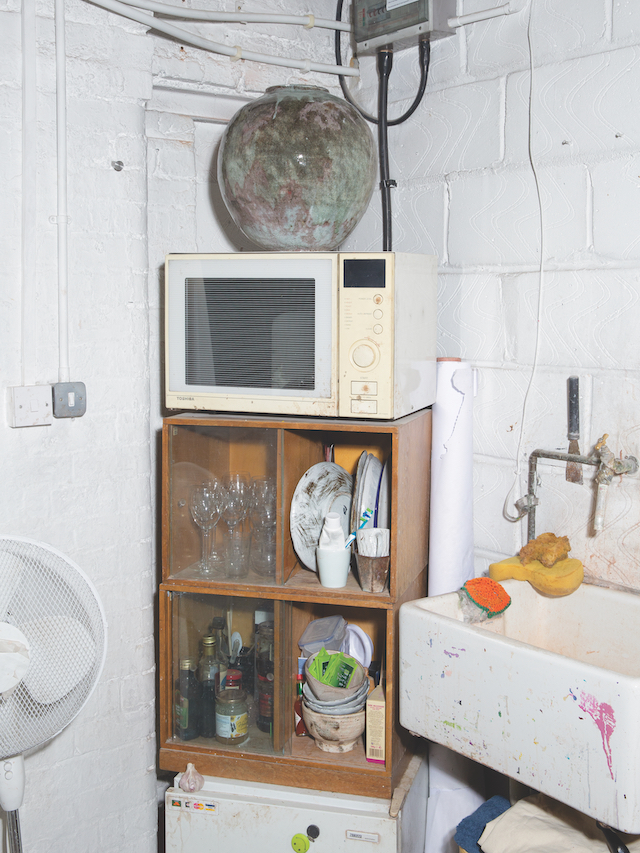
You create a real range of objects, what forms are you particularly drawn to?
My grandmother was a teacher of sencha tea ceremonies. She always said the round form for a teapot was best because the leaves need to circulate and easily follow the wall of the pot, allowing you to brew better tea. I enjoy objects where practicality informs aesthetics, as well as things that seem to have organically grown from the inside out.
How does your original home surface in your work? I know many of your creations are finished Kohiki style
Japanese Kohiki owes a huge debt to Korean pottery, where the technique most likely originated. You can’t beat early Korean pottery, it’s deeply unpretentious. Many items were made in order to be used, not for decoration, and therefore they are finished very naturally. Looking at examples in museums you can see that freedom of the natural form, and what’s striking is that many of them are attributed to no one – they’re anonymous works. I’m drawn to that selflessness, pots that were intended for life.
You’ve said in the past that you like giving your moon jars trauma and hardship, can you expand on why?
The reduction process in the kiln leads to a chemical change to the material, which is a huge stress on it. It’s not like something is melting, it’s fundamentally changing. Like oxygen being taken out from your body, or collagen stripped from your bones. Blues and greens will emerge out of the jar’s iron content, for example, from the stress of different temperatures. That’s why if you see commercially made pottery it’s very static, because no chemical change occurred in the material. It’s a very superficial thing, you don’t feel that transformation.
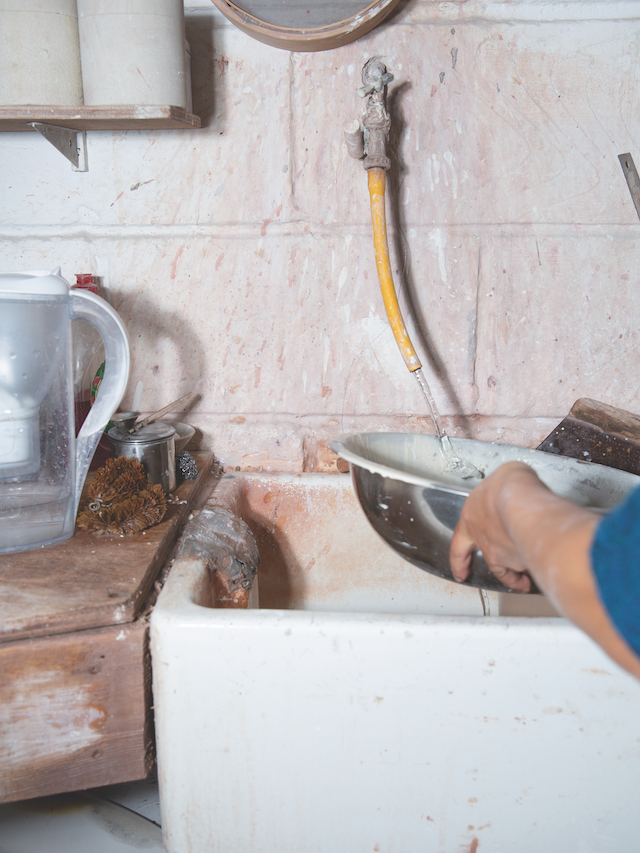
Where do you look to for inspiration?
When I was younger I went to lots of exhibitions. All those paintings, sculptures and installations were all very interesting, dramatic and intentional, but they’re in me now, digested. These days I am more inspired by my everyday life. I go swimming each morning in an outdoor pool and the sky is constantly changing. Sometimes it’s still dark and you can see the stars or moon, other times it’s a deep red. After lockdown finished, you began to see more vapor trails from airplanes. Every day, in the same location, the scenery changes.
In a previous interview you said that “For me a pot is like a human.” I love this sentiment, is it because you have to handle them with care?
Let me give an example. The other day I dropped a bowl; it was slightly squashed and luckily did not break, so I quickly tapped it back to its circular form and rescued it. However after I glaze fired it, it came back with the same warp from where it was dropped. The particles within had remembered that sudden shock, that trauma, despite my efforts. If I had done a similar process but moistened it, put it in a round shape again and rested it for a few days, it would have fixed the warp. I rushed it with my quick remedy. Although the clay looked ok, it wasn’t fully healed. Much like a human – if you have a painful experience and people are briefly sympathetic, you may feel a bit better, but afterwards you’ll soon realise it’s still inside of you. You have to take your time to heal a wound. This is true of clay too.
Also, I live in Hackney, and there are so many different people everywhere you look. My still life bottles are directly inspired by the people I see on the street, the diversity of forms I encounter. In Japan, people are quite homogenous, but here you see each shape has its function, reason and beauty.
Your studio is part of a collective filled with other creatives – photographers, jewellers, painters – is that part of the reason you’ve stayed put for nearly two decades?
It’s so nice to have this little community. Once you are in your own workshop, you shut everything out. But if you feel like chatting, there is always someone around doing their own marvellous thing, and I can be moved by what they’re doing.
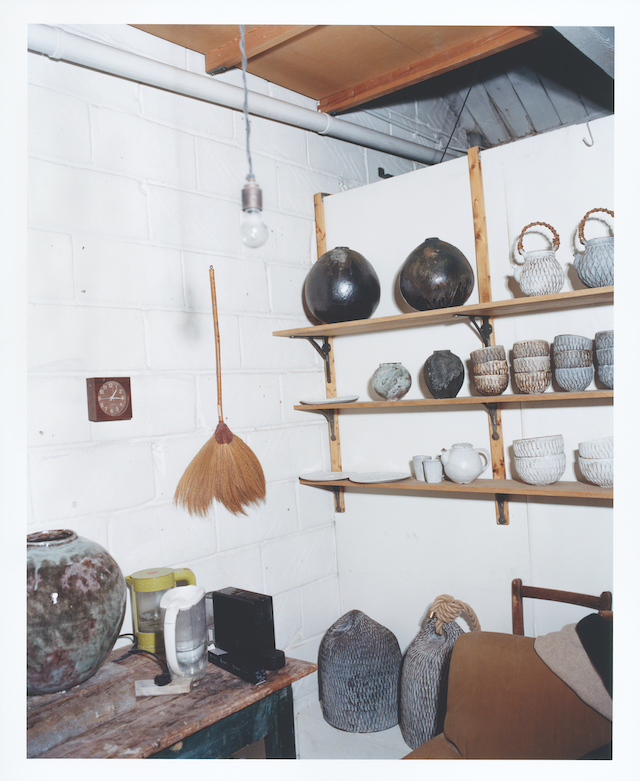
You have a preference of working with dark clay, which consists of impurities that produce strong or unpredictable chemical changes when fired. Why do you enjoy embracing this unknown, more ‘imperfect’ finish?
It is exciting, however you have to intimately know your material before you can leave things to the unknown. It is only through discovery and understanding the rules that you can break them a little bit. It also feels more honest and connected to life itself, more natural to create something that is mixed, because nothing exists independently on its own. There is always influence, or ‘impurity’.
What did you learn in your decade-long role as a ceramics teacher at Kensington & Chelsea college?
It was really good because people made a lot of mistakes and I had to solve their problems! I started teaching just a few years after graduating from Central Saint Martins. At the time I didn’t have enough knowledge, but by teaching you begin to understand what you know and what you don’t know. I learnt not only about materials and processes, but how people see things. My class consisted of many different nationalities and they all had very different aesthetics. It was interesting to discuss a subject or object and witness the variety in perspective.
You’ve written that “the completion of my work is done by the viewers.” Why is an external figure the final piece of the puzzle?
Viewers will bring their own history of looking, their imaginations and contexts, when engaging with a piece, rounding it out. I am also fond of when my domestic ware is bought and becomes part of someone’s everyday, in a way, is completed through its function. I recently received a nice compliment when someone said, “my wife broke one of your mugs, how can I repair it?”. I replied that it’s probably better to get a new one, but apparently she loved it so much and was adamant. I recommended using the kintsugi technique so the mug’s life could go on. She repaired it and now it’s almost become her work, that broken line of gold making it an unexpected collaboration.
Akiko Hirai’s solo exhibition at the Joanna Bird Gallery runs 19th July, 2023
Photography Phoebe Somerfield
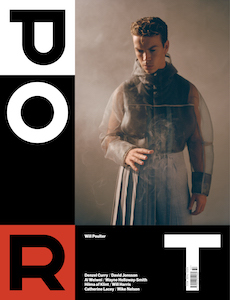
This article is taken from Port issue 32. To continue reading, buy the issue or subscribe here




